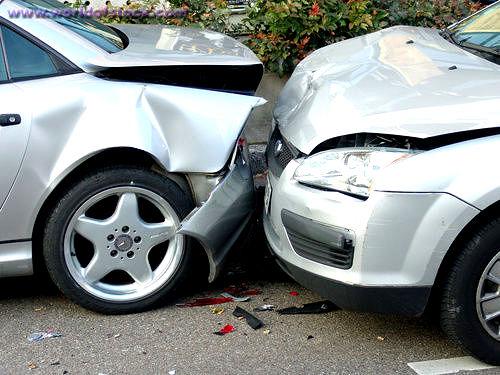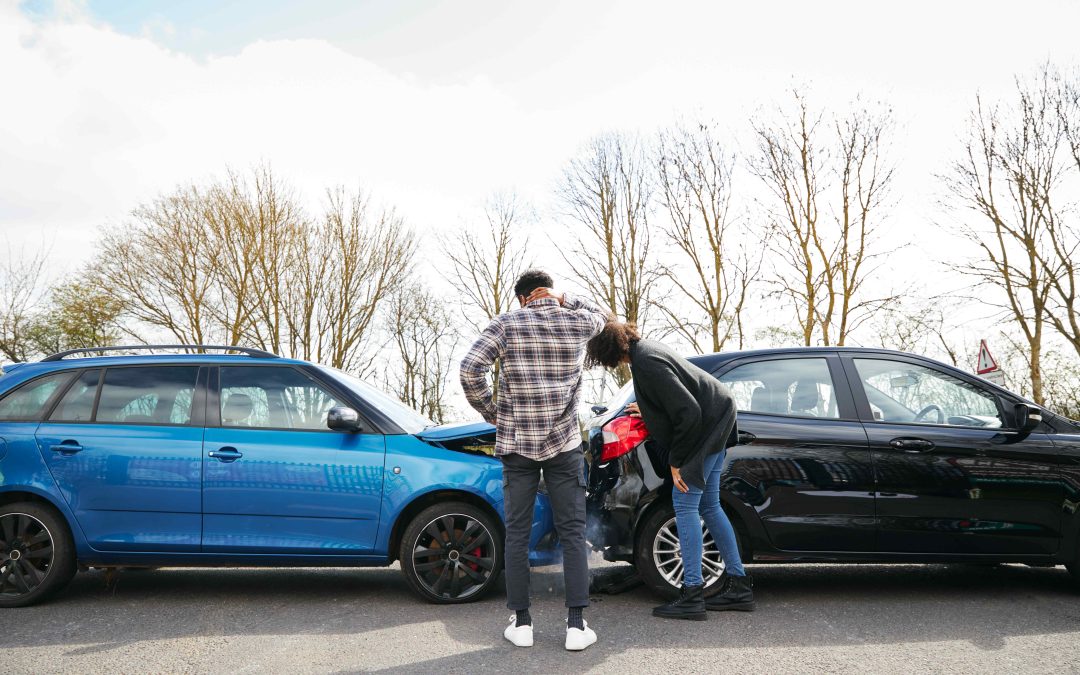
I THOUGHT I HAD FULL COVERAGE!?!
As a personal injury attorney, I can’t tell you how many times a client in a collision tells me they thought they had “full” coverage, only to learn they did not.
What exactly is full coverage? Well, it means different things to different people, but from our experience, when a client tells us they have “full” coverage, they usually have only what the state of Arizona requires/mandates, which, as it turns out, is not much.
Arizona requires that a car owner carry “Liability” and “Property” damage only, which only covers those you might cause injury to if you are at fault for a motor vehicle collision.
Liability Coverage
This is sold in split increments, which means “amounts of available coverage” per person and occurrence. For example, the Arizona minimum is $25,000/$50,000, which means you have $50,000 worth of coverage for everyone you injure in a collision, with no one injured party able to collect more than $25,000. If you’ve caused injury to three or more people, and/or if one person is seriously injured, even if your insurance carrier tenders your policy limits, it may not be enough to fully compensate your victims, in which case injured victims may well decide to pursue you for the value of their claim above and beyond your policy limits. An Emergency Room visit with physical therapy follow-up and a victim’s bills can easily approximate, if not exceed, $25,000. Therefore, carrying the state-mandated minimal limits of liability coverage may not be sufficient to adequately protect you and your assets. Therefore, if you have anything of a personal nature worth protecting (including but not limited to second vehicles, second homes, art, investments, etc.), we recommend purchasing higher liability limits if you can afford it. Most carriers offer increased limits in the following increments (per person/occurrence)
- $50,000/$100,000
- $100,000/$300,000
- $250,000/$500,000
Property Damage
This covers property and related damage, you cause to another/other vehicles. This is designed to cover repair to other vehicles you caused damage to, the “total loss” value of vehicles you damaged beyond repair, rental car costs while their vehicle is being repaired, etc. The state requires you to carry a minimum of $15,000 in property damage coverage. Given the high price of new, and even used vehicles these days, a damaged vehicle could easily cost more than $15,000 to repair and/or replace, so again, having only minimal coverage could potentially personally expose you beyond our limits of coverage. Likewise, if you can afford it, we recommend carrying higher limits of property damage coverage. The next levels of coverage a carrier offers are usually $25,000, $50,000, or $100,000
WHAT IS USUALLY NOT INCLUDED IN “FULL” COVERAGE
Most carriers offer numerous other types of coverage, designed to protect you in the event you and/or your vehicle are injured/damaged in a collision that may or not have been your fault. What follows is a basic summary of other available coverage and why it might be beneficial to add some/all to your policy.
Uninsured Motorist (UM) Coverage
Unfortunately, although against the law, many motorists in Arizona drive without auto insurance. This seems to be especially common in “border” states, of which Arizona is one. If you are hit and injured by an uninsured driver, you are out of luck in terms of getting them to pay for your medical bills, lost wages, pain & suffering, etc., UNLESS you have UM coverage. UM coverage allows you to make an injury claim against your carrier as if your claim was against the uninsured at-fault driver. UM is a no-fault benefit, meaning your carrier cannot punish you for making a UM claim. UM coverage is “portable” in that it will cover you if you were in another vehicle that was hit by an uninsured at-fault driver, and every occupant of your vehicle would be entitled to make UM claims against your policy if you are hit by an uninsured at-fault driver. UM coverage is generally sold in the same “per person/occurrence” increments as liability coverage … $25,000/$50,000; $50,000/$100,000; $100,000/$300,000; etc.
Underinsured Motorist (UIM) Coverage
In the event, the at-fault driver does have liability insurance, but their limits of liability coverage are insufficient to cover your medical bills and/or make you “whole,” if you have UIM coverage, you can present a UIM claim to your carrier up to the single limits of your UIM coverage is enough to result in you being fully compensated for the value of your bodily injuries/damages. Like UM, it is portable and available in the same increased increments. We strongly recommend you purchase both UM & UIM coverage in amounts at least equal to your limits of liability coverage, more if available and affordable. After all, shouldn’t you take as good care of yourself as you would of others?
Medical Payments (Med Pay) or Personal Injury Protection (PIP) Coverage
Many carriers will not offer Med Pay or PIP coverage unless requested. Why? Because like UM & UIM coverage, it too is portable, even more so than UM or UIM. If you are a pedestrian or bicyclist hit by a motor vehicle, you can use your Med Pay or PIP coverage. If you are in another vehicle and they are in a collision, you can use your Med pay or PIP coverage. Everyone in your vehicle can use your Med Pay or PIP coverage. If these aren’t reasons enough, private Health Plans often have high deductibles and/or co-pays. You often need to get pre-approval to treat with a specialist and your Plan may limit the number of therapy sessions per calendar year. None of that applies to Med Pay/PIP. You can usually go to whomever you choose, without any out-of-pocket cost to you. The first $5,000 of Med Pay/PIP is usually not reimbursable, even if you recover the cost of that medical care from the at-fault driver’s carrier. However, be careful. Read the fine print. Some Plans are “excess” meaning they only apply to/pay those costs not covered or paid by an insured’s Health Plan. PIP coverage may be available from out-of-state insurance carriers. It includes coverage for lost wages in addition to medical bills. We recommend carrying at least $5,000 of Med Pay coverage, although some carriers sell it in increments as low as $1,000.
Collision Coverage
This pays for repair for damage done to your vehicle, subject to a designated “deductible.” This helps pay for your vehicle’s repair if you were at fault for the collision, if the at-fault driver is uninsured or underinsured, if liability for the collision is disputed and being investigated, etc. if your vehicle can’t be repaired, or if it would cost too much to repair and you are to be paid for the vehicle’s pre-collision value instead whereas an at-fault driver’s carrier may not have sufficient coverage, one’s collision coverage would not be subject to any such limitations. “Deductibles” can be as low as $250.00 and as high as $1,000.00 (or more). Even if your vehicle is paid for and owned outright, unless you can easily afford a down payment on a replacement vehicle if yours is a total loss, I recommend carrying collision coverage. The older and less valuable the vehicle, the less likely the cost of collision coverage.
Comprehensive Coverage
This pays for fire and theft damage done to your vehicle, and, like collision coverage, is subject to a designated “deductible.”
Glass Coverage
This pays for chopped and cracked windshields and broken side windows. Some carriers sell glass coverage with a “zero” deductible. This may be worth having if you do a lot of highway/freeway driving where larger vehicles/trucks kick up rocks.
Rental/Loss of Use Coverage
This will pay for you to be in a rental while your vehicle is being repaired, or, if deemed a total loss, until you are offered a total loss fair market value offer on your vehicle. Coverage are usually limited per day and total (such as $30.00/day with a max $1,200)
If you have rental coverage and want to use it, you’ll likely have to allow your carrier to handle your property damage claim. Most carriers will set you up on a direct bill with a rental company, but rest assured if another caused the collision, your carrier will pursue reimbursement from the at-fault carrier. Like with Med Pay, be careful here too. Some carriers only cover 80% of the rental costs. Others may require you to advance the costs and submit receipts for reimbursement.
Roadside Assistance
This is exactly as it sounds. They’ll send someone to you if you need help changing a flat tire, if you lock your keys in your car if you need a new battery or a “jump,” or if you need a tow.
If you are unsure as to what coverages you can afford and what levels of coverage you should consider, feel free to call us at Lebovitz Law Group (602-975-5550)where one of our experienced attorneys can walk you through your options.
Sort by Category
Related Posts

Understanding Arizona’s Car Seat Rules
Understanding Arizona's Car Seat Rules is crucial for every parent and caregiver. These regulations are designed to ensure the safety of young passengers, which can significantly reduce the risk of injury in case of an accident. This article aims to provide a...

Does the Government Tax Money from Lawsuit Settlements?
Does the Government Tax Money from Lawsuit Settlements? Lawsuit settlements can be a source of financial relief, but it's important to understand the tax implications so you're not caught off guard during tax season. Government taxation of lawsuit settlement funds is...

Can I sue if I get whiplash from a car accident?
A whiplash injury is a neck injury caused by the sudden back-and-forth motion of the head, commonly seen in car accidents. This type of injury can lead to significant pain and discomfort, often making it difficult for victims to go about their daily activities. If you...

When the At-Fault Driver Has No Car Insurance: Your Options for Compensation
Being involved in a car accident can be a stressful experience, especially when the at-fault driver lacks car insurance. This scenario raises concerns about securing compensation for damages and injuries. Key takeaway: In this article, we will discuss the options...

Did You Know This About Workplace Harassment Laws?
Workplace harassment is unwelcome behavior significantly disrupting an employee's work environment or personal well-being. When this behavior is based on protected characteristics like race, gender, or religion, it not only affects the individuals targeted but also...

Did Your Dentist Make a Mistake? How to Know When to Call a Dental Malpractice Lawyer
Dental malpractice is a sad reality that can have serious consequences for patients. It includes things like surgeries gone wrong, incorrect diagnoses, faulty dental devices, and mistakes in giving anesthesia. As a patient, you trust your dentist to give you safe and...
